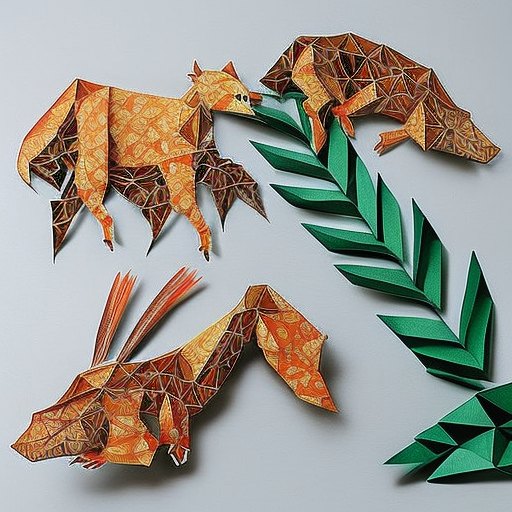Summary:
Origami is the art of paper folding that originated in Japan. It involves creating intricate designs and shapes by folding a single sheet of paper without cutting or gluing. The word “origami” comes from the Japanese words “ori” meaning folding and “kami” meaning paper. Origami has a rich history and has evolved into a popular art form worldwide. It is not only a creative outlet but also a way to relax and improve focus.
Origins and History:
Origami has been practiced in Japan for centuries and has its roots in the traditional Japanese art of paper folding. The exact origins of origami are unclear, but it is believed to have started around the 6th century. Initially, origami was used for ceremonial purposes, such as folding paper cranes as offerings at shrines. Over time, it became a recreational activity enjoyed by people of all ages.
Techniques and Materials:
Origami involves folding a single sheet of paper into various shapes and forms. The paper used for origami can be of different sizes, colors, and textures, depending on the desired outcome. Traditional origami uses square-shaped paper, but rectangular paper can also be used. The most common type of paper used for origami is known as “kami,” which is thin and easy to fold.
There are various folding techniques used in origami, including valley folds, mountain folds, and reverse folds. Valley folds create a concave shape, mountain folds create a convex shape, and reverse folds involve folding a section of the paper in the opposite direction. These techniques, along with others, allow for the creation of intricate designs and models.
Types of Origami:
Origami can be categorized into different types based on the complexity of the designs and the purpose of the folded objects. Traditional origami focuses on creating animals, plants, and geometric shapes. Complex origami involves intricate folding patterns and is often used to create realistic models of animals or objects.
Modular origami involves creating multiple units and assembling them to form a larger structure. This technique is often used to create decorative objects such as vases or boxes. Kirigami is a variation of origami that involves both folding and cutting the paper to create intricate designs.
Origami in Popular Culture:
Origami has gained popularity worldwide and has become a part of popular culture. It is often featured in movies, books, and exhibitions. The art of origami has also influenced other fields, such as mathematics and engineering. The principles of origami have been applied to create innovative designs in architecture, robotics, and medical devices.
Origami is not only a creative art form but also a therapeutic activity. Many people practice origami as a way to relax, reduce stress, and improve focus. The repetitive folding motions can have a calming effect on the mind and provide a sense of accomplishment when a complex design is successfully completed.
Conclusion:
Origami is a traditional Japanese art form that involves folding paper into intricate designs and shapes. It has a rich history and has evolved into a popular art form worldwide. Origami offers a creative outlet and can be enjoyed by people of all ages. It is not only a form of artistic expression but also a way to relax and improve focus. The principles of origami have influenced various fields, and its therapeutic benefits make it a popular activity for many.












